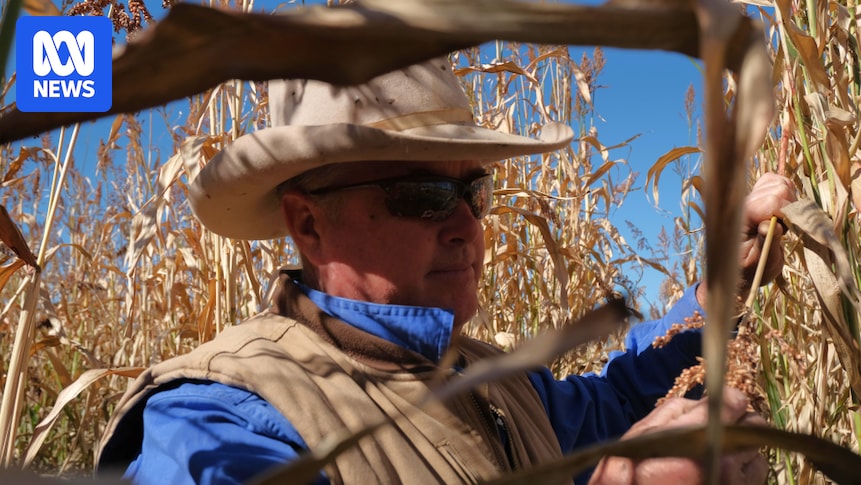
While the cattle and sheep of Boyd Webb’s outback station roam the Mitchell grass plains, a harvester diligently reaps the fruits of his labor in a nearby paddock. Situated in Muttaburra, the geographical heart of Queensland’s grazing territory, Webb’s property has become a site of agricultural innovation over the past four seasons. Here, he has embarked on a cropping experiment aimed at fortifying his farm against future droughts.
Webb’s initiative involves growing grain without irrigation, with the current sorghum harvest destined to be buried as a safeguard for the inevitable dry spells that threaten his pastures. This approach is part of a broader trend among graziers in the bush who are turning to cropping as a means of ensuring stability.
Crops as a Buffer Against Drought
Boyd Webb has cultivated over 280 hectares of dryland sorghum nestled between his cattle and sheep paddocks. This crop will serve as sustenance for his livestock during the next dry season. “As sure as night follows day, it will get dry in this country again,” Webb remarked.
The harvested sorghum is transported to a deep pit capable of storing up to 3,000 tonnes of feed. In this pit, the plant material ferments, transforming into silage—a nutrient-rich “pickled pasture” that can sustain livestock long after natural grass has ceased to grow.
“We’re not [going to be] pushed into a corner and have to sell [stock] because we’ve run out of feed or it hasn’t rained,” Webb stated. “If we hit four or five dry years in a row, we’d have enough feed up our sleeves to get us through it.”
Webb plans to expand his crop to more than 600 hectares next year, aiming to increase the volume of feed stored on his property. His ultimate goal is to store 20,000 tonnes of silage sorghum, creating a substantial buffer against the region’s cyclical droughts.
Adapting to a Changing Climate
While recent years have offered a reprieve from the millennium drought, the memory of those challenging times lingers for many producers. For Webb, diversifying into sorghum cultivation represents a strategic adaptation to the unpredictable climate of Queensland’s interior.
Growing dryland crops that rely on rainfall might appear risky in a region notorious for its arid conditions, but Webb remains optimistic. “If you’ve got enough moisture to grow Mitchell grass, you’ve got enough moisture to grow sorghum,” he explained.
This sentiment is echoed by other industry players. In the Northern Territory, prominent cattle operations, including Gina Rinehart’s Helen Springs Station and the Consolidated Pastoral Company (CPC), have sought permits to clear land for cropping.
Learning from Experience
At a recent Farm to Feed forum in Katherine, Andrew Cochrane of CPC shared insights from their cropping endeavors. While external feed and supplements continue to play a role, having access to homegrown feed offers significant advantages, particularly for young cattle.
“That weaning process … it’s a very integral time and a big stress period on those animals,” Cochrane noted. “You can smooth that out and keep them on a rising growth plane, we’re turning those cattle off much sooner than in previous years.”
Breaking New Ground in Muttaburra
The cropping experiment in Muttaburra is unusual, given its location in the heart of grazing country. Over the past four years, Webb has experimented with oats for hay and multiple sorghum crops, overcoming challenges and gaining valuable insights along the way.
“It’s a whole new world,” Webb admitted. “Probably the biggest limiting factor is how quickly we can absorb it, understand it and implement it … to an outsider there’s a lot to learn.”
Webb’s journey into cropping began with the purchase of second-hand machinery, a cost-effective strategy that has proven effective for his needs. “When I started, all our farming equipment was basically less than what you’d buy a buggy for,” he said.
“I think that’s where farming is going to end up out here. It won’t be for growing cereals, it’ll be for supporting the livestock industry.”
As Webb continues to run cattle and sheep alongside his sorghum crop at Weewondilla, his story exemplifies the innovative spirit of Queensland’s graziers, who are adapting to the challenges of a changing climate while securing the future of their livelihoods.





